Why you can trust Tom's Hardware
Advanced Transient Response Tests
For details about our transient response testing, please click here.
In the real world, power supplies are always working with loads that change. It's of immense importance, then, for the PSU to keep its rails within the ATX specification's defined ranges. The smaller the deviations, the more stable your PC will be with less stress applied to its components.
We should note that the ATX spec requires capacitive loading during the transient rests, but in our methodology, we also choose to apply a worst case scenario with no additional capacitance on the rails.
Advanced Transient Response at 20% – 20ms
| Voltage | Before | After | Change | Pass/Fail |
| 12V | 12.051V | 11.878V | 1.43% | Pass |
| 5V | 5.011V | 4.910V | 2.01% | Pass |
| 3.3V | 3.277V | 3.158V | 3.63% | Pass |
| 5VSB | 5.032V | 4.966V | 1.32% | Pass |
Advanced Transient Response at 20% – 10ms
| Voltage | Before | After | Change | Pass/Fail |
| 12V | 12.054V | 11.888V | 1.38% | Pass |
| 5V | 5.011V | 4.911V | 2.01% | Pass |
| 3.3V | 3.277V | 3.158V | 3.63% | Pass |
| 5VSB | 5.032V | 4.967V | 1.29% | Pass |
Advanced Transient Response at 20% – 1ms
| Voltage | Before | After | Change | Pass/Fail |
| 12V | 12.056V | 11.942V | 0.94% | Pass |
| 5V | 5.012V | 4.922V | 1.80% | Pass |
| 3.3V | 3.277V | 3.155V | 3.74% | Pass |
| 5VSB | 5.032V | 4.982V | 1.00% | Pass |
Advanced Transient Response at 50% – 20ms
| Voltage | Before | After | Change | Pass/Fail |
| 12V | 12.027V | 11.914V | 0.94% | Pass |
| 5V | 4.998V | 4.915V | 1.65% | Pass |
| 3.3V | 3.266V | 3.144V | 3.72% | Pass |
| 5VSB | 5.084V | 5.037V | 0.93% | Pass |
Advanced Transient Response at 50% – 10ms
| Voltage | Before | After | Change | Pass/Fail |
| 12V | 12.030V | 11.921V | 0.91% | Pass |
| 5V | 4.999V | 4.911V | 1.75% | Pass |
| 3.3V | 3.266V | 3.138V | 3.92% | Pass |
| 5VSB | 5.085V | 5.048V | 0.74% | Pass |
Advanced Transient Response at 50% – 1ms
| Voltage | Before | After | Change | Pass/Fail |
| 12V | 12.032V | 11.936V | 0.80% | Pass |
| 5V | 4.999V | 4.913V | 1.71% | Pass |
| 3.3V | 3.266V | 3.138V | 3.91% | Pass |
| 5VSB | 5.085V | 5.044V | 0.80% | Pass |





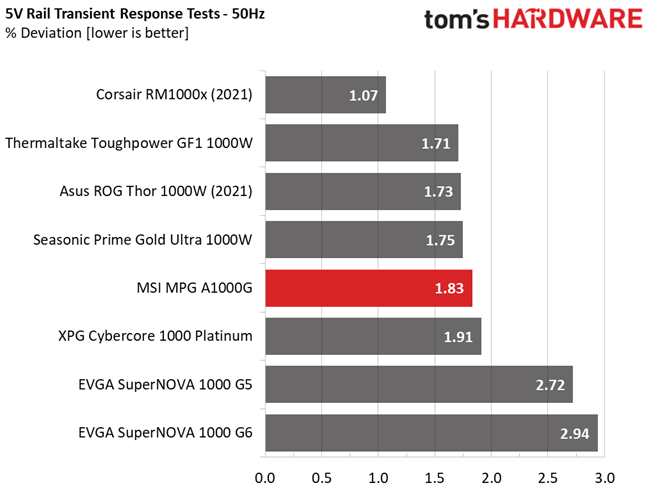


Transient response is average at 12V and 5V and good at 5VSB, which doesn't matter much anyway. At 3.3V, the deviations are not large, but the rail drops way below 3.2V when the transient load is applied because of the low initial voltage.
Turn-On Transient Tests
In the next set of tests, we measure the PSU's response in simpler transient load scenarios—during its power-on phase. Ideally, we don't want to see any voltage overshoots or spikes since those put a lot of stress on the DC-DC converters of installed components.



There is a small voltage overshoot at 5VSB, which is nothing to worry about. Both 12V slopes are almost perfect.
Power Supply Timing Tests
There are several signals generated by the power supply, which need to be within specified, by the ATX spec, ranges. If they are not, there can be compatibility issues with other system parts, especially mainboards. From year 2020, the PSU's Power-on time (T1) has to be lower than 150ms and the PWR_OK delay (T3) from 100 to 150ms, to be compatible with the Alternative Sleep Mode.
Get Tom's Hardware's best news and in-depth reviews, straight to your inbox.
| T1 (Power-on time) & T3 (PWR_OK delay) | ||
|---|---|---|
| Load | T1 | T3 |
| 20% | 50ms | 140ms |
| 100% | 50ms | 140ms |

PSU Timing Charts
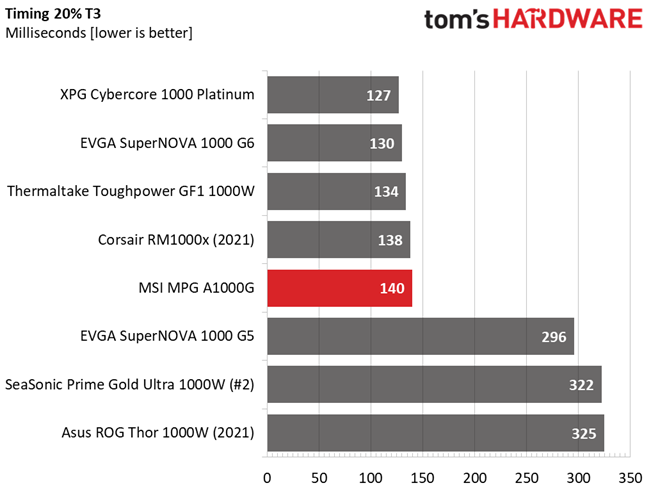


The PWR_OK delay is within the 100-150ms region, so the PSU supports the Alternative Low Power Mode (ALPM) recommended by the ATX v3.0 spec.
Ripple Measurements
Ripple represents the AC fluctuations (periodic) and noise (random) found in the PSU's DC rails. This phenomenon significantly decreases the capacitors' lifespan because it causes them to run hotter. A 10-degree Celsius increase can cut into a cap's useful life by 50%. Ripple also plays an important role in overall system stability, especially when overclocking is involved.
The ripple limits, according to the ATX specification, are 120mV (+12V) and 50mV (5V, 3.3V, and 5VSB).
| Test | 12V | 5V | 3.3V | 5VSB | Pass/Fail |
| 10% Load | 4.9 mV | 6.2 mV | 4.7 mV | 6.2 mV | Pass |
| 20% Load | 11.4 mV | 5.9 mV | 4.8 mV | 6.0 mV | Pass |
| 30% Load | 9.1 mV | 6.2 mV | 6.7 mV | 6.8 mV | Pass |
| 40% Load | 9.2 mV | 6.5 mV | 5.4 mV | 7.4 mV | Pass |
| 50% Load | 9.5 mV | 6.8 mV | 5.7 mV | 7.3 mV | Pass |
| 60% Load | 10.3 mV | 7.6 mV | 5.8 mV | 7.3 mV | Pass |
| 70% Load | 10.5 mV | 8.1 mV | 6.2 mV | 8.4 mV | Pass |
| 80% Load | 11.8 mV | 8.6 mV | 10.3 mV | 8.7 mV | Pass |
| 90% Load | 12.2 mV | 9.3 mV | 10.8 mV | 8.9 mV | Pass |
| 100% Load | 21.0 mV | 10.1 mV | 11.5 mV | 10.5 mV | Pass |
| 110% Load | 21.2 mV | 10.6 mV | 12.0 mV | 11.1 mV | Pass |
| Crossload 1 | 10.1 mV | 8.7 mV | 11.8 mV | 10.6 mV | Pass |
| Crossload 2 | 7.7 mV | 11.2 mV | 5.7 mV | 10.1 mV | Pass |
| Crossload 3 | 6.6 mV | 5.8 mV | 15.0 mV | 9.6 mV | Pass |
| Crossload 4 | 19.4 mV | 8.8 mV | 6.7 mV | 13.4 mV | Pass |

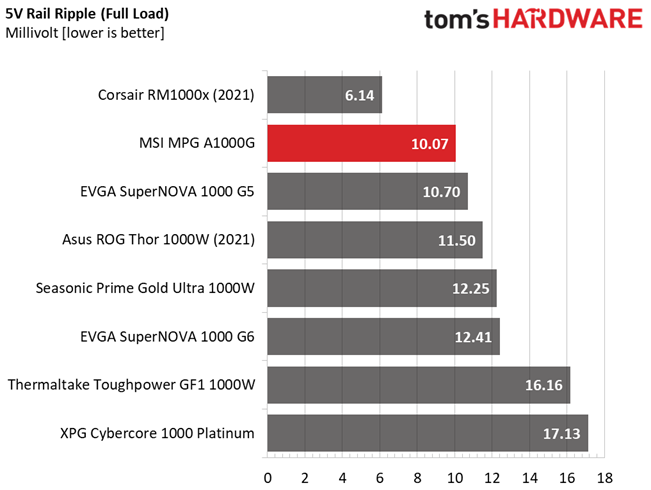


Ripple suppression is good.
Ripple At Full Load
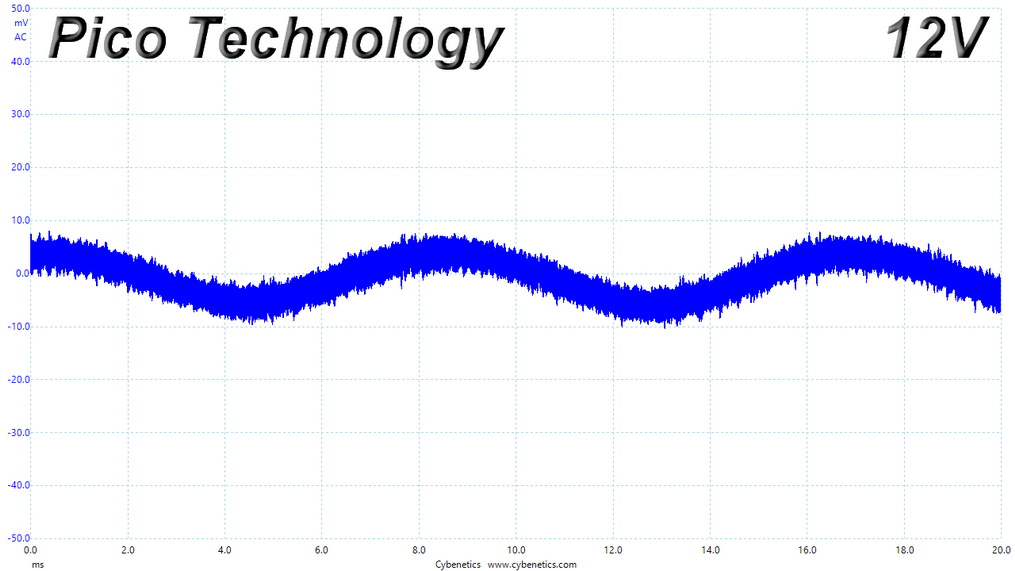

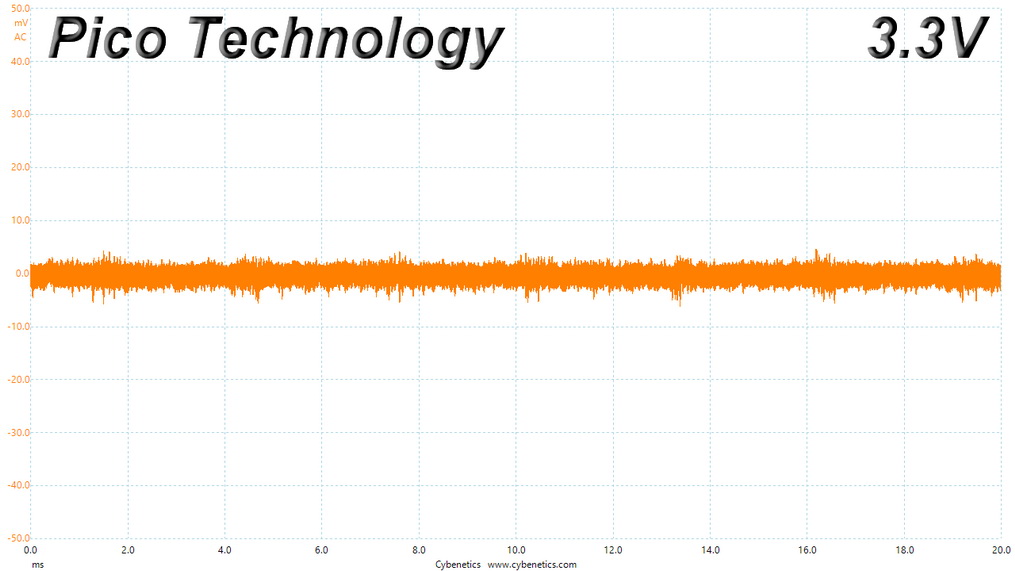
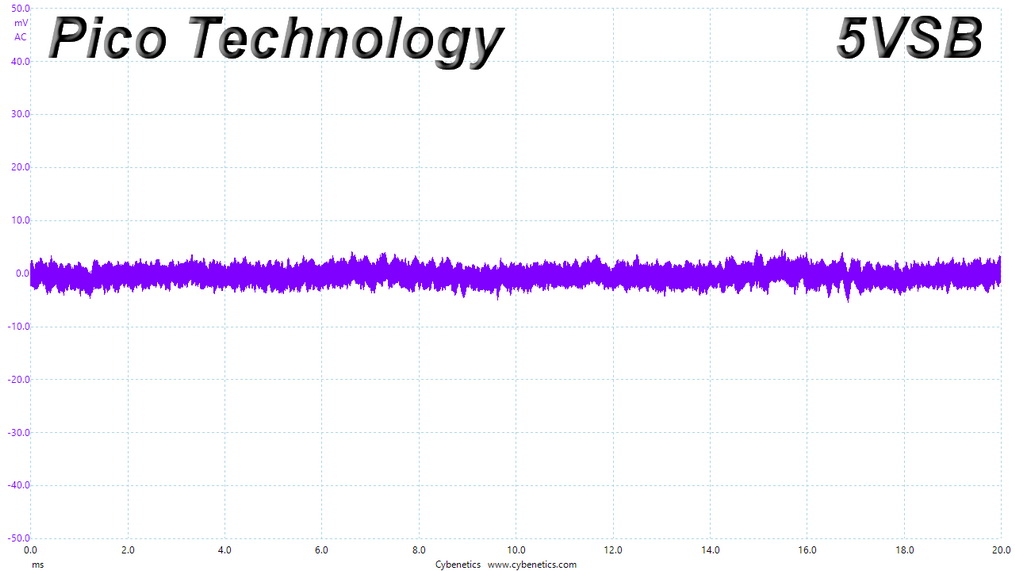
Ripple At 110% Load




Ripple At Cross-Load 1


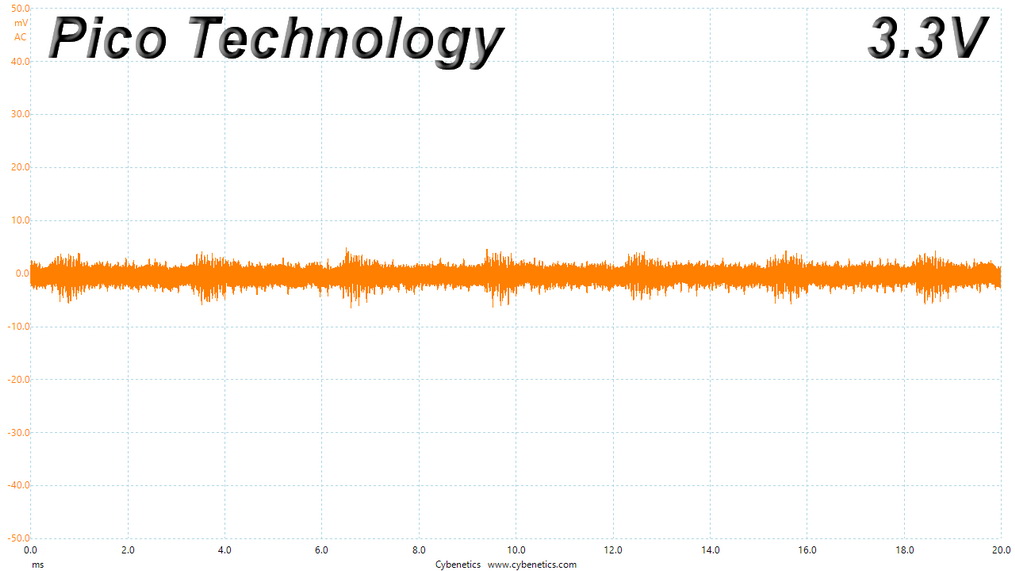
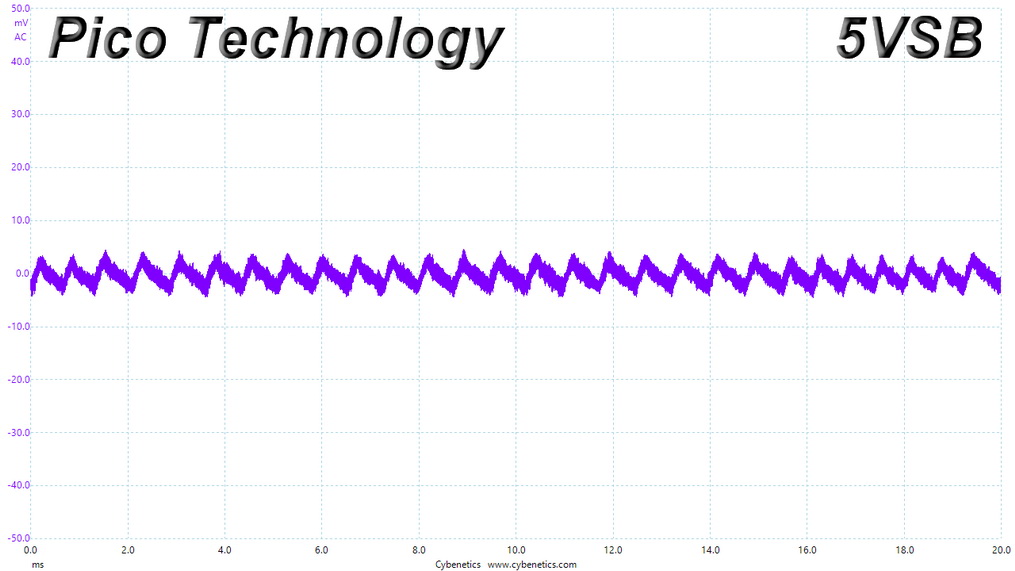
Ripple At Cross-Load 4



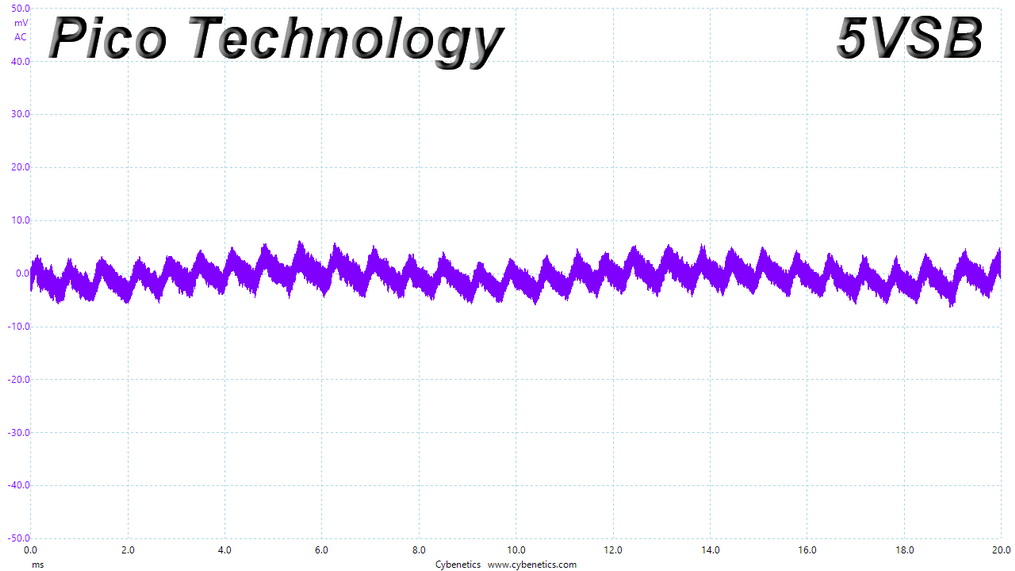
EMC Pre-Compliance Testing – Average & Quasi-Peak EMI Detector Results
Electromagnetic Compatibility (EMC) is the ability of a device to operate properly in its environment without disrupting the proper operation of other nearby devices.
Electromagnetic Interference (EMI) stands for the electromagnetic energy a device emits, and it can cause problems in other nearby devices if too high. For example, it can be the cause of increased static noise in your headphones or/and speakers.
EMI emissions are high, in the 522 to 882 KHz range.
MORE: Best Power Supplies
MORE: How We Test Power Supplies
MORE: All Power Supply Content
Current page: Transient Response Tests, Timing Tests, Ripple Measurements and EMC Pre-Compliance Testing
Prev Page Protection Features, DC Power Sequencing, Cross-Load Tests and Infrared Images Next Page Performance, Noise, Efficiency and Power Factor
Aris Mpitziopoulos is a contributing editor at Tom's Hardware, covering PSUs.
-
vinay2070 Would AIBs be using the 12 pin GPU connectors for Ada? Or is it just nvidia reference cards? I read that Radeon cards will stick to the existing 8 pin connectors.Reply -
dk382 Thank you for the review. I've been looking at ATX 3.0/PCIe 5.0 power supplies, and I assume this one is very similar to the A1000G version with the new PCIe 5 connector that's available for $200.Reply
I face palmed when I first saw the fan grill on that PSU, came here, and was completely unsurprised to find that it's a little noisy. How much quieter would it be if it just had a normal fan grill instead of all that metal that's currently blocking the fan? What's the point of such a stylized design if it's just gonna be face-down in a PSU shroud anyway? All it's doing is adding unnecessary impedence when combined with your case's own PSU fan grill and dust filter.
